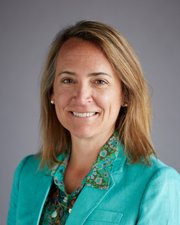RETAIL
Sundance at 25: Brand Building With a Curatorial Eye
The Sundance Catalog is celebrating its 25th anniversary this year with a series of one-of-a-kind products and a sweepstakes drawing for an all-expenses-paid trip to the Sundance Resort in Salt Lake City.
Sundance Village was developed by actor, director and independent-film proponent Robert Redford on a tract of land he purchased in 1969 at the base of Mount Timpanogos in Utah’s Wasatch Mountains and was turned into an art community anchored by the Sundance Institute and the Sundance Film Festival. Visitors to the village would often drop by the tiny general store, which carries a variety of apparel and gift items made by artists and craftspeople from around the U.S. and around the world. The catalog was founded in 1989 after visitors who had returned home would call asking about purchasing items from the store.
Today, in addition to the catalog, the company operates retail boutiques in Lone Tree, Colo., and Corte Madera, Calif., as well as an outlet store in Salt Lake City.
California Apparel News Executive Editor Alison A. Nieder recently caught up with Sundance Catalog Chief Executive Officer Matey Erdos to talk about the company’s customers, its unique product mix and its plans for the future.
Who is the Sundance shopper?
She has great personal style that is ageless, unique and artistic. She is geographically diverse in her location and aspires to hold the Sundance lifestyle and values of independent and creative expression in her life.
How does Sundance source the product it carries?
With a very curatorial eye. We source our products through our longstanding relationships with select designers and artisans from all over the United States and the world. At the same time, we are always looking for what is new and undiscovered.
Does the company view itself as a catalog retailer first and then an e-commerce retailer? Is there a distinction between the two?
Sundance views itself as an aspirational-lifestyle multichannel retailer across catalog, Web and retail. Each channel is as critical as the other as we market to our customer through an omni-channel customer experience. While the business launched 25 years ago as a cataloguer, our customers have evolved as a Web-savvy consumer who chooses to transact frequently on the Web and on multi devices. While the catalog is a key driver to the Web, we see the e-commerce platform as a tool for merchandising, marketing and customer service that goes beyond what the pages of the catalog can achieve.
Has it changed in recent years?
Our customers’ expectations and shopping behaviors have changed, and that directly places pressure on technology and data-analytics requirements. Our customers are gravitating toward the Web at a far faster pace than previous years and, in particular, across devices. Developing state-of-the-art systems and analytics, which enable us to offer our customers a seamless and fast experience, is simply critical in creating and preserving customer loyalty.
How do the company’s bricks-and-mortar stores fit into the overall business?
The retail experience is a natural extension of the direct side of the business, bringing the Sundance brand and lifestyle to life. Retail expansion beyond our two existing full-price stores is definitely in our future plans.
Are there specific challenges to catalog retail that differ from traditional bricks-and mortar retail?
There is always the challenge of free shipping that haunts many cataloguers. While this is a real cost to the company, there are several customers that steer clear of purchasing through the direct channel.
What advantages does having three channels—catalog, email and boutiques—give you over retailers with one or two channels?
Our brand awareness can be greatly enhanced by achieving a greater footprint in bricks and mortar, as well as enhance the catalog reach to new potential customers in that trade area. They both can work symbiotically with a targeted marketing and merchandising strategy. Three channels also enable us to support a greater omni-channel experience.
Many California brands sell to Sundance with success. What advice do you have to apparel and accessories designers looking to sell to Sundance?
Keep it special, unexpected and of great quality.
























